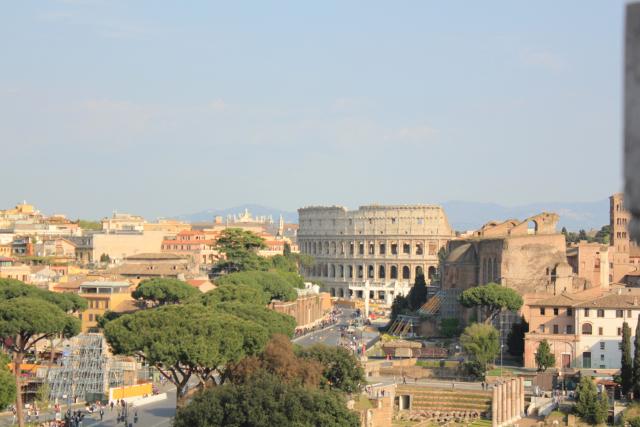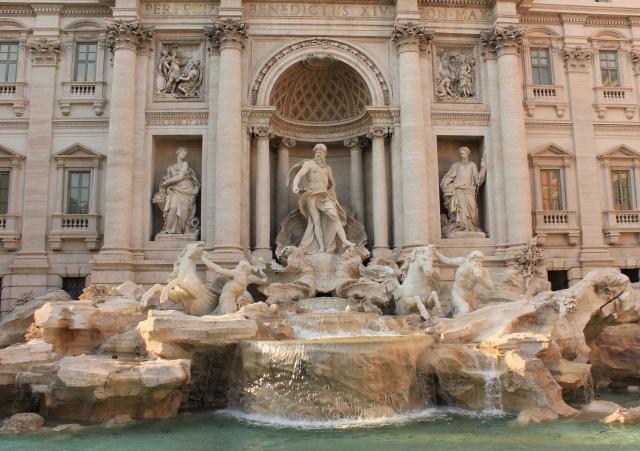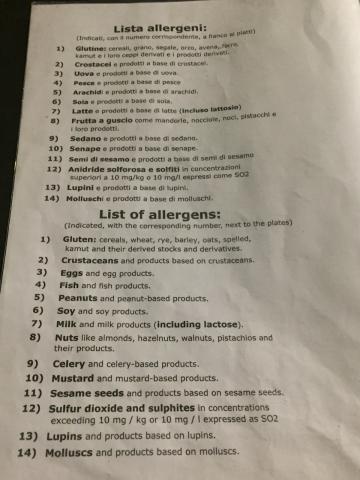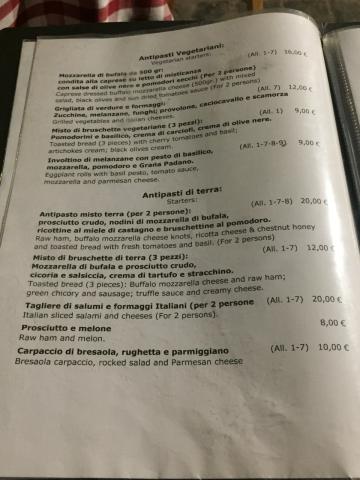Visiting Rome
As all roads lead to Rome, it is perhaps inevitable that Travelling with Allergies ended up in this historic European capital city. The civilisation centre of the world during the reign of the Romans, sees millions of tourists annually to visit the mighty Colosseum, Trevi Fountains and cross over into the Vatican City.
Italy, and of course Rome, is famed across the world for its cuisine, and diving into the food scene is a fantastic way to sample the culture. While there is a huge range of pizza and pasta dishes everywhere, with pizzeria diners seemingly residing on every street (which are unlikely to be suitable for wheat or egg allergy sufferers) there is also an abundance of meat options available. As you might expect from a world renounced city with high levels of tourism, English is widely understood and explaining allergies to restaurant staff should not be a problem. In fact, the only problem seemed to be the popularity of many restaurants and so it is recommended to reserve a booking in advance if you are particularly set on visiting a specific restaurant. This is especially the case if you happen to be visiting Rome during Holy periods of the Catholic calendar, such as Easter or Christmas, which can see huge rises in the number of people travelling to the city.
Of the restaurants visited, La Foccacia, in the Ponte district on Via della Pace, really stood out due to the allergy menu provided to their customers. One of their menu pages, illustrated below, shows 14 allergens: Gluten, Crustaceans, Eggs, Fish, Peanuts, Soy, Milk, Nuts, Celery, Mustard, Sesame seeds, Sulphur dioxide and sulphites, Lupines and Molluscs in both Italian and English and assigns the allergens a number. Throughout the rest of the menu, these allergen numbers are allocated to the relevant foods and therefore lets people visiting with allergies know which foods to avoid in advance. After selecting a dish, it is still recommended to make the staff aware of any allergies you may be suffering from. This is another example of a restaurant practicing a small act that really increases the confidence of customers with allergies.
Another thing to be aware of is the wealth of dessert options, of which two receive a special mention; tiramisu and gelato. Both are ubiquitous throughout Rome, however the preparation of these desserts differs from shop to shop. For example, in many places visited the tiramisu was prepared separately from the rest of the desserts and the staff were able to confirm that the tiramisu was nut-free. However, with the case of gelato, this was offered with a variety of flavours, and of which pistachio was commonplace, thus all of the gelato options had a high risk of cross contamination and a no-go for nut allergy sufferers. Remember however, it is always advisable to consult the staff on the presence of allergens before ordering food.
In summary, Rome offers many cultural, historical and excellent food options for those that decide to visit. English is widespread and allergies seem to be understood by restaurant staff (from those visited on this trip). Communicating allergy concerns was not a problem and those travelling with allergies should be able to visit Rome without much hindrance.




